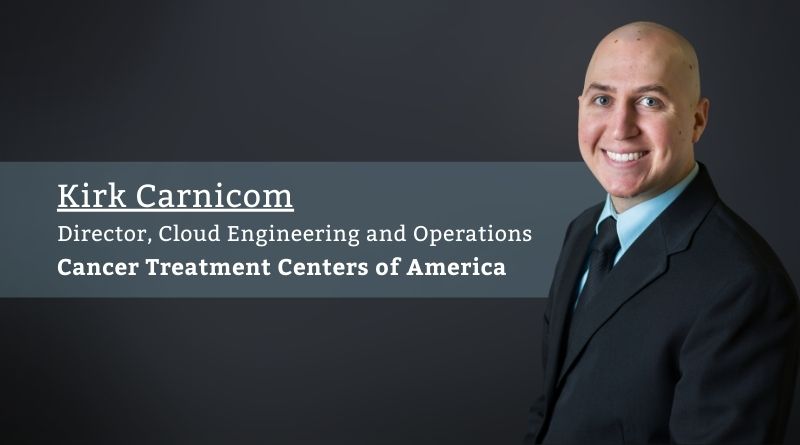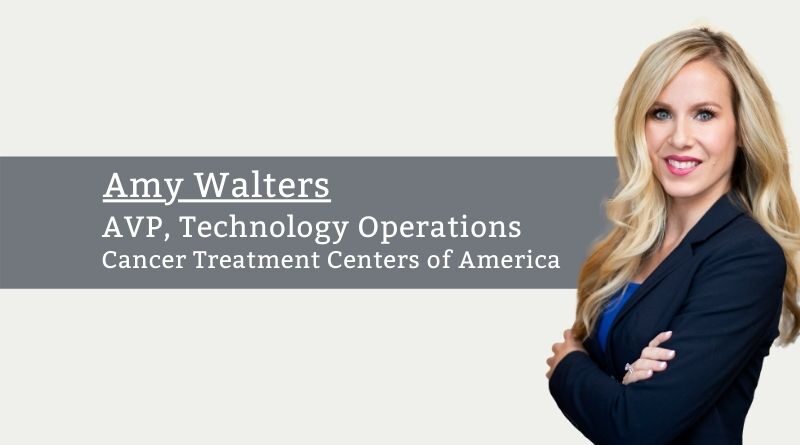What Were We Waiting for? DevOps Transformation at Cancer Treatment Centers of America
By Amy Walters, AVP, Technology Operations & Kirk Carnicom, Director, Cloud Engineering and Operations, Cancer Treatment Centers of America

DevOps, the combination of product development (Dev) and technology operations (Ops), is a buzzword thrown around often in the Information Technology industry. Many companies seek to transform with DevOps but do not know where to start. Within healthcare, the landscape is rapidly changing – not to mention confronting the COVID-19 pandemic. Competition is fierce and enhancing the business through technology is vital for survival. It has never been more important to prioritize making this shift! Why should healthcare companies take on this transformation? The question should be, why not?
Traditionally, software development and infrastructure operations teams would be in separate reporting structures or silos. That separation introduced many opportunities for errors along the software delivery pipeline as software changed hands between developers and operations staff many times before it saw the light of day. The two teams often were not even working in the same environment; as a result, tension and finger-pointing between teams developed when failure occurred in a production environment. Accountability for defects was unclear, further straining relationships between disciplines. How does DevOps help? DevOps breaks down those functional silos. Developers, engineers, and business stakeholders work hand in hand daily, building and releasing software to deliver the following benefits:
- Highly Engaged Teams: No more “hand-offs,” “seams,” or “baton passes.” Strong collaboration increases engagement and tends to promote job satisfaction for all. Team members are working towards a shared goal, with shared incentives, leading to a healthy esprit de corps.
- Quality: When continuously building and releasing code, the team can correct it immediately if there is an issue. This eliminates having to go back and look for bugs in code that is deployed potentially months after it was written. The code changes are fresh in the team’s mind to identify and resolve bugs much more quickly.
- Customer satisfaction: More frequent releases mean customers’ needs are met more quickly. When there is a lag between release cycles, customer needs are bound to change in response to changes in the market. Rework to accommodate those changes can be time-consuming and costly, leading to poor customer satisfaction. Constantly delivering small, incremental changes improves the team’s agility and reduces the potential for rework and missed opportunities.
How do you make a transition into a DevOps culture? At Cancer Treatment Centers of America (CTCA), we made the shift with our Salesforce technology team – here’s how:
- Tools: Automate, automate, automate! Manually building, testing, or releasing code will no longer suffice, not to mention it is cumbersome and monotonous for the talent on your team. You must invest in tools to automate these processes in the software delivery pipeline. You will soon see that your investment pays off. “By utilizing a native DevOps tool, our team is achieving faster, error-free Salesforce deployments with continuous delivery and integration. We shifted from a waterfall development cycle and releasing code monthly to DevOps Agile – averaging 46 deployments per month. We have built a foundation that will allow our Salesforce delivery teams to scale, based on high confidence in our delivery practice and resulting in outstanding service to our business partners.” – Saima Asad, CTCA Salesforce Director.
- Mindset: You will need team members who are willing to adopt a new methodology. This is perhaps one of the biggest pieces. You cannot afford to have any detractors. The team must welcome the change in their day-to-day activities, or you will not be successful. As a leader, you must consistently point out the larger successes to motivate the team to stay the course. We find it very helpful to showcase and celebrate the team’s performance metrics monthly, but even more important is sharing the positive reviews from our customers.
- Collaboration: Eliminate silos between development, operations, and business stakeholders, and have the teams working hand in hand.
- Accountability: A key to our success in this transition was introducing a true Product Owner role. This individual is responsible for the Salesforce roadmap as well as the strategic partnership with our customers to prioritize their needs. Each requirement is broken down into bite-size pieces so we can perform daily code releases to introduce production features. By adopting this new cadence, we were able to improve overall system performance and reliability. “By working hand in hand with both our customers and the development team, I make sure our customers’ voices are being heard and our development initiatives are closely aligned with our strategic enterprise priorities.” – Casey Hart, CTCA Salesforce Product Owner.
Prior to our DevOps transformation, the tension between business partners and our Salesforce technical team was at an all-time high. They never felt their needs were heard, much less met. The technical team felt as though they could never keep up with changing business requirements. A culture adjustment was crucial.
Transforming our organization by creating a DevOps culture has been a very rewarding journey. We achieved an average of 46 code releases per month in 2020. DevOps at its foundation is about being a better partner to those you serve and allowing them to adapt quickly to the fast-changing industry. Fittingly, the most rewarding part of this change has been the reaction from our business stakeholders:
“From a business owner/customer standpoint, the shift to DevOps has been a critical enabler of ongoing success in the patient services center. Delivery of system enhancements that used to take months are now measured in days and sometimes just hours. This level of responsiveness has allowed our business to adapt rapidly to changing market dynamics while ensuring our patients continue to receive high quality and differentiated patient experience.” – Dan Kotecki, Vice President, CTCA Patient Service Center and Sales Operations.
Together, the product and technical teams have never been more engaged or excited about our progress and success.



